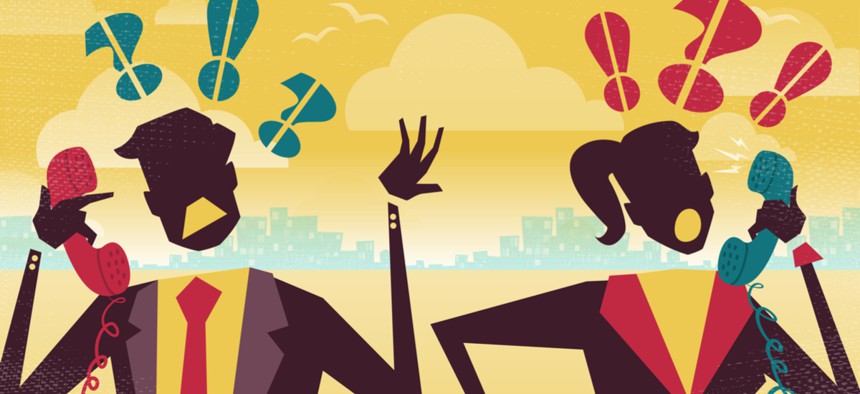Federal Government Provides ‘Worst of the Worst’ Customer Experiences

jorgen mcleman/Shutterstock.com
Federal agencies and programs like Healthcare.gov continue to rank toward the bottom of Forrester Research's Customer Experience Index.
Federal agencies account for five of the 10 worst customer service providers across 21 leading industries in the United States.
According to Forrester Research’s Customer Experience Index released this week, the federal jobs marketplace USAJOBS.gov finished dead last in providing customer service among 314 total brands studied. Healthcare.gov finished second to last, while the Education Department, Transportation Security Administration and the IRS all finished in the bottom 10 in survey data collected from 11,600 U.S. online consumers.
“The worst of the worst customer experiences in the U.S. come from federal agencies,” Rick Parrish, a principal analyst at Forrester and lead author of the index, told Nextgov. “A few agencies are taking baby steps in the right direction, and that’s a good sign. However, the federal government still dominates the bottom of the index.”
» Get the best federal technology news and ideas delivered right to your inbox. Sign up here.
As a whole, federal agencies finished tied for last in average customer service scores alongside internet service providers. Parrish said most ISPs performed worse in 2017 than they normally do, and said some high-performing agencies helped drag up the lowest-performing agencies. Conversely, retail banks, digital-only retailers, wireless service providers and investment firms averaged the highest scores among all industries.
As it did last year, the National Park Service scored highest among federal agencies, earning a 75 out of a possible 100, making it the 35th rated brand in Forrester’s index. The next-best customer service provider in government was the U.S. Postal Service, which ranked 173rd among all brands.
Four government agencies or programs made small improvements in the past year: the Small Business Administration, Medicaid, TSA and Healthcare.gov. However, last year’s most improved agency, the State Department’s Bureau of Consular Affairs, accounted for the largest statistical drop in the 2017 index. Last year’s 10-point jump was more than offset by this year’s 13-point drop.
“When a score goes down, usually the drivers most important to CX are not performing as well,” said Parrish, noting that ease, emotion and effectiveness are three key drivers to delivering top-notch customer service. The Bureau of Consular Affairs’ is in the midst of a major increase in passport applications it must process.
Parrish said one of the most surprising results in the index is that the government’s digital customer service efforts score lower than its traditional non-digital customer service. That means that federal websites and applications provide worse customer service than call centers or offices, despite the fact that customers may still have to wait in line—or on the telephone line—for a customer service representative.
It isn’t just because customers like speaking or seeing a person, Parrish said, because digital retailers often score far better than face-to-face retailers in customer service scores. Parrish said he suspects federal agencies view digital as a means to save money rather than actually improve customer service.
“The impetus behind going digital is so often associated with cost savings instead of delivering an improved customer experience,” Parrish said. “You can’t push people to digital channels.”
Rather, he said agencies need “to pull them to digital channels” by delivering superior customer service there.
Parrish credited the IRS as one agency successfully moving digital, noting its digital customer experience score increased 14 points in this year’s index.






